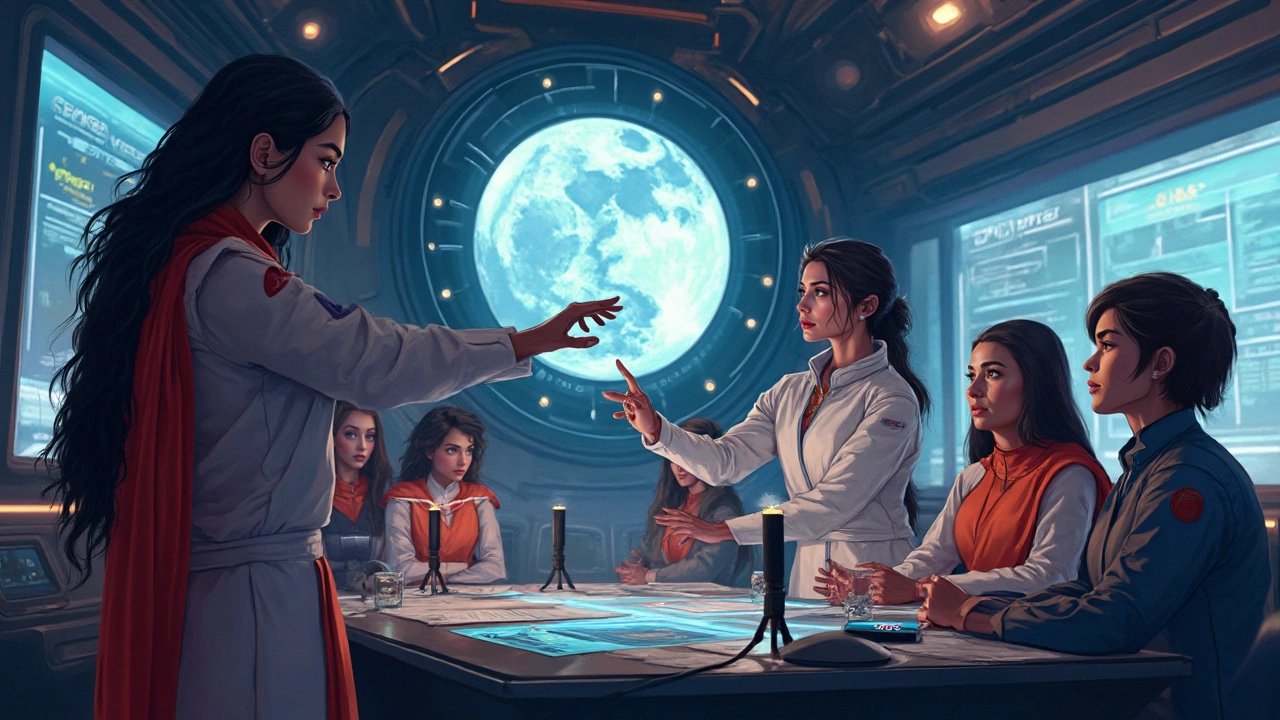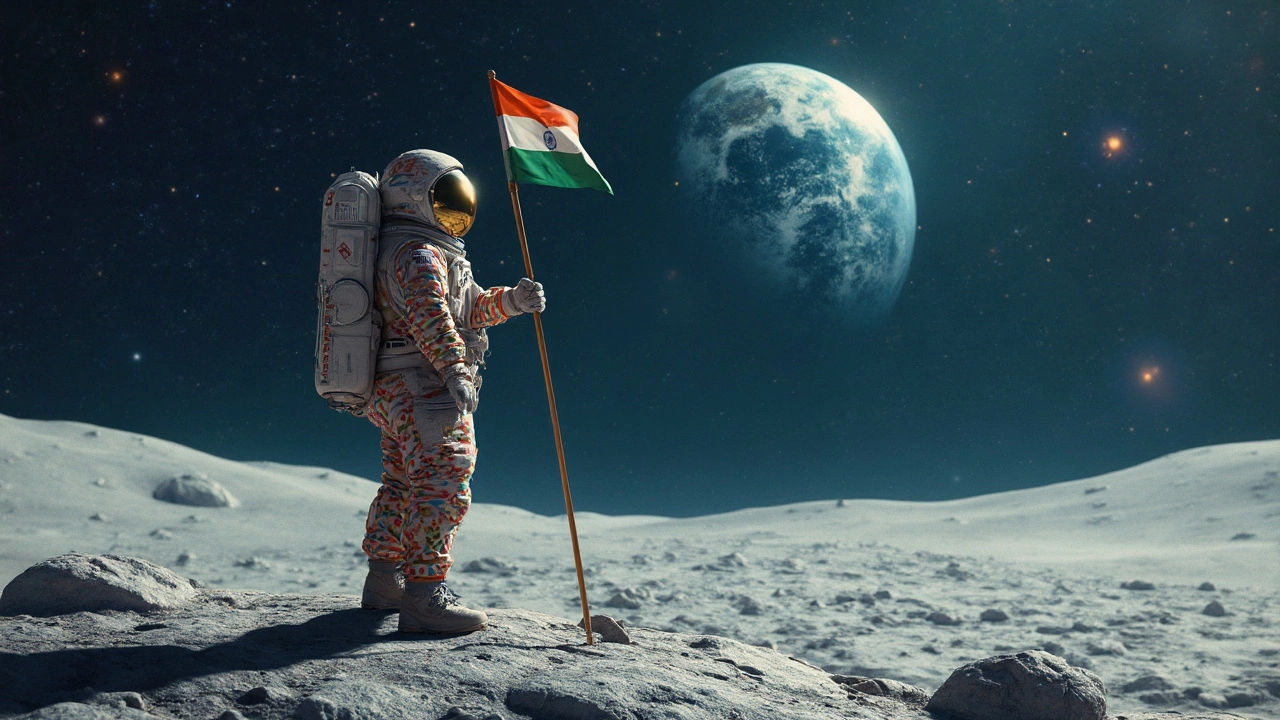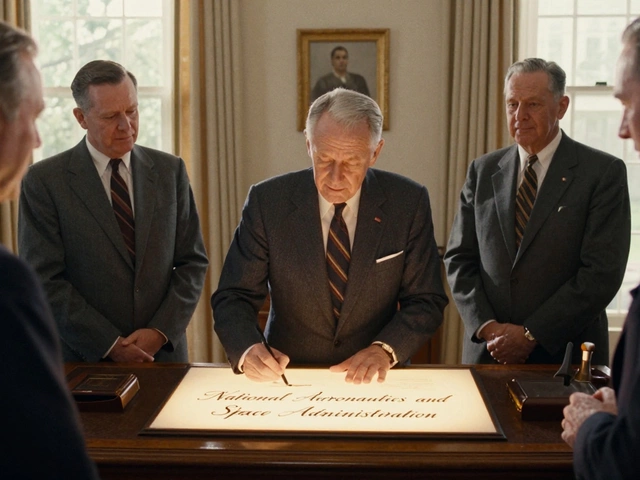The question, "Has a woman ever walked on the moon?" has piqued curiosity for many years. Surprisingly, despite over half a century of space exploration, no woman has set foot on our lunar neighbor yet. Doesn't that seem odd given humanity's tremendous strides in gender equality and technology?
The first landing on the moon took place in 1969 during NASA's Apollo 11 mission. Buzz Aldrin and Neil Armstrong made history, but the list of twelve astronauts who have walked on the moon remains all male, reflecting the gender norms and professions in the 60s and 70s.
However, times have changed. NASA and other space agencies worldwide are actively working to ensure women have equal opportunities to explore extraterrestrial landscapes. With the Artemis program, NASA is planning to send the next man and the first woman to the moon by the mid-2020s. How cool would it be to witness history being rewritten?
- Moon Landings and Gender History
- The Progress of Women in Space
- Challenges and Barriers
- Current Missions and Goals
- Why Women on the Moon Matter
- Looking Ahead to the Future
Moon Landings and Gender History
In the realm of space exploration, the 1960s and 70s were dominated by a series of exciting firsts—but these milestones were mostly achieved by men. The iconic Apollo missions, including the renowned Apollo 11 in 1969, were launched by NASA with all-male crews. It's not because women lacked the capability or desire but rather due to the societal norms and professional barriers of that era.
During the early days of human spaceflight, female participation was scarcely considered. The space race between the United States and the USSR focused largely on technical achievements, leaving equality behind. By the end of the Apollo program in 1972, twelve men had walked the moon, with no women among them.
The Rise of Female Astronauts
Despite the initial setbacks, women began to break into the aerospace field. The first American woman in space, Sally Ride, flew on the Space Shuttle in 1983. Since then, the number of women astronauts has steadily increased, allowing more women to participate in missions aboard the International Space Station (ISS) and other endeavors.
According to recent stats by NASA, about 35% of the newest class of astronauts are women, marking a significant shift towards gender equality in the space realm.
Why No Woman on the Moon Yet?
Technically speaking, there's no explicit reason why a woman hasn't walked the moon yet—it's more about timing and opportunity. The renewed focus on lunar exploration with current missions provides fresh chances to rewrite those history books. With programs like Artemis, which aims to land the first woman on the moon by the mid-2020s, we're closer than ever to bridging this gender gap in space.
The Progress of Women in Space
Women have been gradually breaking barriers in the field of space exploration. It wasn’t until 1983, when Sally Ride flew on the space shuttle Challenger, that women began their significant journey in space missions.
First Steps and Milestones
Soviet cosmonaut Valentina Tereshkova holds the distinction of being the first woman in space, orbiting the Earth in 1963. It was a bold move at a time when gender roles were quite defined, but it wasn’t followed by many similar achievements until much later.
The United States followed two decades later with Sally Ride, who became the first American woman to fly in space. Following that, women began to participate more in space programs and missions. In 1984, Kathryn Sullivan became the first American woman to walk in space during a shuttle mission.
Today, women continue to play crucial roles in missions. As of October 2023, nearly 70 women have flown in space, representing the progress made over the decades.
Breaking New Ground
The advent of the Artemis program by NASA aims to take this progress even further. With their commitment to have the first woman and the next man on the moon by the mid-2020s, it emphasizes the inclusive approach modern programs are taking.
| Year | Milestone |
|---|---|
| 1963 | Valentina Tereshkova becomes the first woman in space |
| 1983 | Sally Ride becomes the first American woman in space |
| 1984 | Kathryn Sullivan, first American woman spacewalk |
| 2023 | Nearly 70 women have flown in space |
Having more women in space exploration doesn't just promote equality but also inspires future generations of female scientists, engineers, and astronauts. It opens up the field to diverse thinkers and problem solvers, enhancing innovation and discovery.
The next giant leap in space will hopefully include a woman's steps on the moon, a step that is highly anticipated and will mark a significant milestone in space exploration.
Challenges and Barriers
When it comes to sending women to the moon, there are a blend of challenges, both old and new. Historically, the space race was all about political clout and scientific achievement during the Cold War, and the thought hadn't expanded enough to include women in moon missions. Today, however, the barriers are more nuanced, spanning from societal perceptions to technical adjustments.
Gender Biases in Space Programs
One of the major barriers has been the longstanding gender biases within aerospace institutions. While they have been making strides to include more female astronauts, the top leadership and decision-makers have often been male-dominated. This has sometimes meant that considerations essential for women, like the design of space suits, were not prioritized.
Technical and Physical Requirements
NASA and other space agencies are working on customizing equipment that fits all astronauts, irrespective of gender. For example, space suits had primarily been designed with a generic male physique in mind, potentially posing a hindrance for women. NASA recognized this when an all-female spacewalk was postponed in 2019 due to the absence of a right-sized suit. Crazy, right? They're now making sure this isn't an issue going forward.
Cultural and Financial Hurdles
Funding is another challenge. Space exploration budgets are always tight, and sometimes, initiatives to diversify crews don't get immediate backing. Cultural attitudes also play a role. Some societies still hold stereotypes about roles suitable for women, which can affect international collaboration efforts in space exploration.
Despite these challenges, the tide is turning. Agencies are more committed than ever. With programs like Artemis aiming to be inclusive, the dream of seeing women making those small steps on the moon is getting closer with each passing year. Change might be slow, but it's definitely happening!

Current Missions and Goals
Today, space agencies like NASA are gearing up to make history with the next phase of lunar exploration. The Artemis program is set to launch soon and aims to land the first woman and the next man on the moon. This isn't just a mission for the headlines; it has significant implications for how we approach and understand space exploration.
NASA is working hard towards a big goal—establishing a sustainable human presence on the moon by the end of the decade. Through Artemis, the agency plans to unlock the mysteries of the lunar surface, focusing on scientific discovery and lunar resource utilization.
The Artemis Program Breakdown
- Artemis I: This uncrewed mission, already launched successfully, tested the Space Launch System (SLS) and Orion spacecraft. It laid the groundwork for crewed missions.
- Artemis II: This mission will carry astronauts around the moon and is a crucial step before landing.
- Artemis III: Set to make history, this mission will land astronauts on the lunar south pole, including the first female astronaut to step on the moon.
The excitement doesn't end there. The goal is to pave the way for Mars missions, expanding our knowledge and capabilities in space.
Goals Beyond the Moon
NASA isn't alone. Space agencies such as ESA, Roscosmos, and companies like SpaceX are collaborating more than ever. They're keen to explore beyond the moon, eyeing Mars, asteroids, and even deeper space.
Creating an inclusive team is part of their long-term strategy, recognizing that having diverse perspectives can lead to more innovative solutions. Women in leadership roles and space missions reflect a significant change in approach that benefits science as a whole.
With ambitious targets set for the mid-2020s, these missions are not just aiming for lunar visits. They’re testing how humans can live and work on other worlds, setting the stage for the next giant leap in our space exploration journey.
Why Women on the Moon Matter
The idea of a woman walking on the moon is more than just ticking a milestone; it's about representation and inspiration. When we talk about diversity in space exploration, we're talking about including everyone in the journey to the stars. Seeing a woman step onto the lunar surface would mean confronting a past of gender biases and moving towards a more inclusive future.
One significant reason why it matters is representation. Young girls have grown up seeing male astronauts in the spotlight for ages, and that can subconsciously limit their dreams. Having female role models in these aspirational positions can change perceptions. It's like saying, "Hey, this isn't just for the guys. You can do this too!"
Furthermore, diverse teams bring diverse solutions. Women might offer different perspectives and innovations when it comes to solving the challenges of space missions. We've seen this already in various missions on the International Space Station where women have performed complex spacewalks and experiments.
The Broader Impact
Let’s not forget the broader implications here. The presence of women in science fields increases the potential for creativity and invention. When women are part of key decision-making processes, whether in technology or policy making, it often results in more holistic and inclusive outcomes.
| Year | Number of Female Astronauts |
|---|---|
| 1999 | 29 |
| 2023 | 65 |
The numbers above reflect a growing trend, but there’s still a lot of room for growth in getting equal representation in every field, especially in lunar exploration missions.
Then there's the matter of scientific exploration. Women can help scrutinize the moon's untouched regions and give us a clearer understanding of its mysteries. Just as importantly, in terms of the economy, having women involved in space missions can encourage educational and career pursuits in STEM, ultimately benefiting societies globally.
Looking Ahead to the Future
As space agencies set their sights on the moon once again, this new era of exploration promises a more inclusive approach. NASA's ambitious Artemis program aims to take the next giant leap, landing both a man and a woman on the lunar surface. It's about time that women are given the opportunity to leave their footprints alongside their male counterparts.
This isn't just about setting historical precedents. It's also about inspiring future generations of women to pursue careers in space exploration. The sight of a female astronaut on the moon could ignite dreams worldwide, encouraging more women and girls to dive into fields of science and engineering.
But why stop at inspiration? Real, practical advancements are underway. Collaborative plans like those involving the European Space Agency (ESA) and other international partners are reshaping how we approach space travel and who gets to go. These partnerships aim to ensure diverse teams are on upcoming moon missions and beyond.
- Technology: Spacesuit designs are getting updates tailored for all body types, ensuring comfort and mobility during lunar exploration.
- Training: New training programs designed specifically for upcoming missions emphasize both physical and mental preparedness.
- Collaboration: Global partnerships are building a more connected and inclusive space exploration community.
The future of lunar exploration isn't just about technological advancements; it's about making space accessible to all, regardless of gender. As we prepare to bounce back to the moon, the inclusion of women in these missions isn't merely symbolic. It's a testament to the progress we've made and a commitment to breaking down the barriers that have kept women astronauts earthbound for so long.





